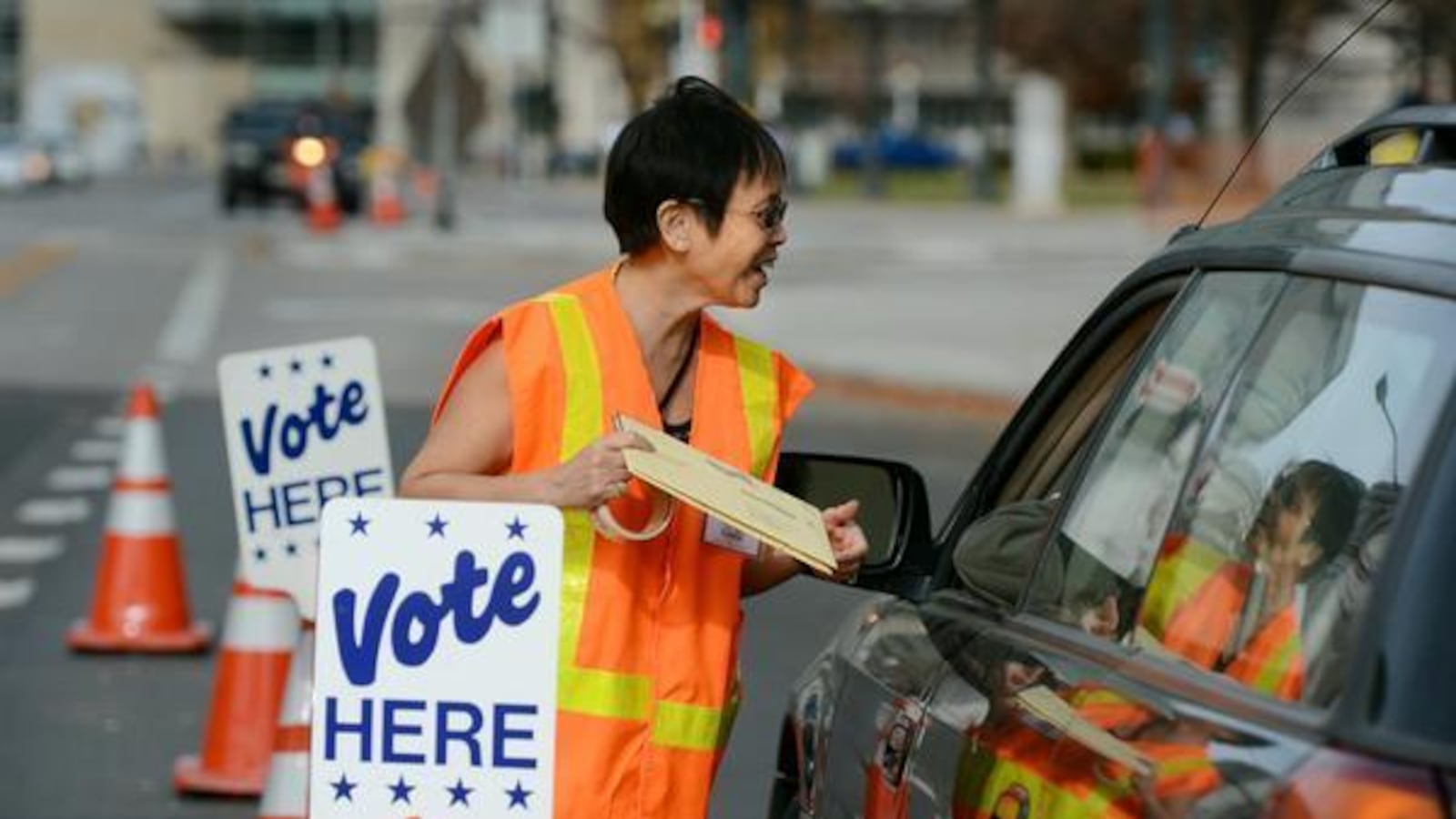In many ways, the storylines of this year’s Denver school board election feel familiar. Those who embrace the district’s policies, and those who remain resistant. Those who welcome charter schools against those who see them as forces of privatization. Candidates willing to consider closing low-performing schools versus those dead-set against it.
But as candidates who oppose the reforms that have brought national recognition to Denver Public Schools in the last decade once again battle to gain a foothold on a board that unanimously backs the district’s direction, some factors are different this time around, said several longtime district observers.
Among the most glaring, they said, is how shifts in the national political climate — and the divisiveness surrounding U.S. Education Secretary Betsy DeVos — are permeating local races.
“In the aftermath of Trump, the Democratic party, which is dominant in Denver, has moved pretty hard to the left,” said Eric Sondermann, a political analyst who is supporting the incumbent candidates. “…And among many of those activists, opposition to reformers and to charters has become more and more the holy grail.”
Four of the seven board seats are up for election Nov. 7. All of the seats are contested and each race includes at least one candidate who disagrees with the district’s direction. If those candidates sweep the election, they’ll have the political power to change key policies.
At rallies and in interviews and campaign literature, groups pushing for DPS to reverse direction are seeking to tie the district to DeVos, whose brand of education reform, which includes private school vouchers, has been aggressively disavowed by the district and its school board.
But critics point to certain decisions the board has made in the last two years. They include the further expansion of high-performing charter networks and the adoption of a school closure policy that uses strict criteria to determine when to replace low-performing schools and leaves little room for impassioned pleas to keep them open.
After more than a decade of such strategies in Colorado’s largest school district, the evidence of whether they’re working or not is piling up. Yet in what is perhaps a sign that the local debate is growing more polarized, the two sides interpret it differently.
“I think the district is suffering from a lack of proof that their reforms are working,” said a former board member, Jeannie Kaplan, who supports candidates who want to see a change.
Mary Seawell, a former board president who favors Denver’s reforms, said the opposite.
“What makes this election different than the past three is that we have so much more independent data showing the improvements happening districtwide,” said Seawell, citing a recent laudatory report by an education nonprofit that praised Denver for effectively managing schools with different governance structures and showing high rates of academic growth.
“We have proof and evidence,” she said, “that a lot of this is really working.”
It’s true that Denver students made more academic progress on state tests last year than ever before and that the percentage reading and doing math at grade-level moved to within a few points of the statewide average, a big feat for a district that historically lagged far behind. But reform opponents point out that only 39 percent of third-graders scored at grade-level in English.
The district’s four-year graduation rate increased from 52 percent in 2010 to 67 percent in 2016, mirroring a national trend. However, of the 10 largest districts in Colorado, only neighboring Aurora graduates a lower percentage of its students in four years.
And while 85 percent of incoming kindergarteners got into their first-choice schools this year, critics argue that not providing transportation to all students who want to attend a school outside their neighborhood presents a hollow choice for families who can’t drive their kids across town.
That the two sides can’t agree on the facts is hampering debate, said Van Schoales, whose organization, A Plus Colorado, favors many district policies but doesn’t endorse candidates.
“On one hand, we hear the district is being privatized by profiteers,” a characterization that isn’t true, he said. “On the other side, we hear the district is great and made more improvement than any other district in the country.
“Yeah, it’s improved, but it’s far from where it needs to be,” Schoales added. “In previous elections, there was more of a rich debate around, how do you get from (here to there)?”
Other factors are in play. School board elections are historically low-turnout. And observers on both sides wonder aloud whether the reformers can rally the support needed to continue the winning streak that has resulted in a 7-0 board in favor of the district’s direction or whether their opponents can marshal the necessary votes to tip the board’s balance of power.
“The question is: Is that opposition gaining strength?” Sondermann said, “Or is it just the same minority point of view that it’s been for the last half-dozen, dozen years?”

